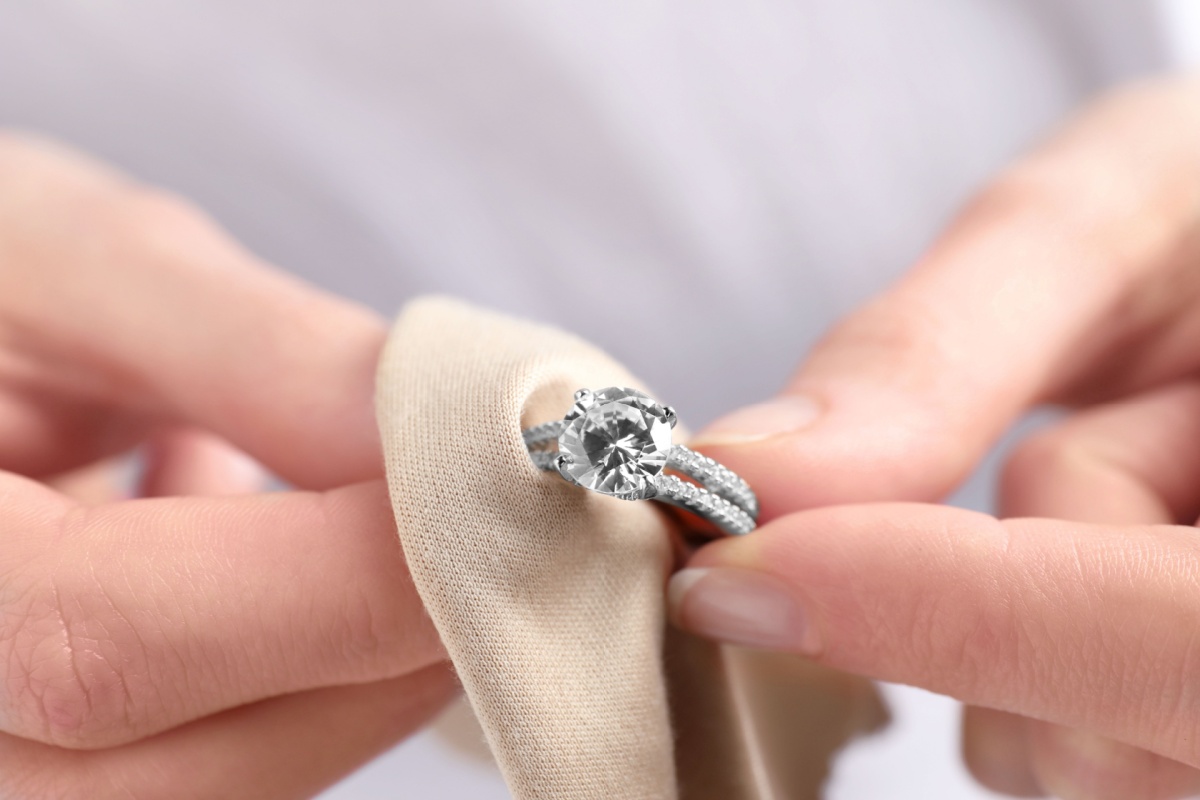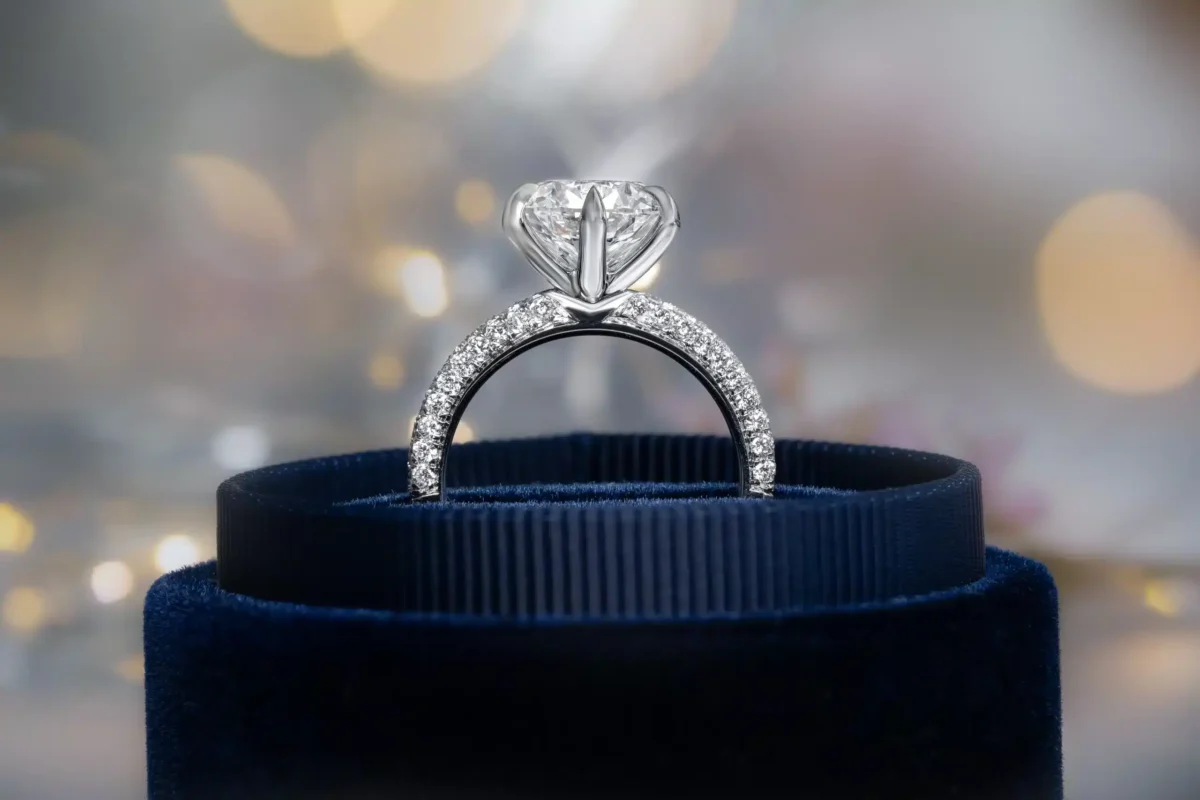

Choosing the perfect engagement ring setting is a significant step in your love story. At Diamondport Jewellers, we know that every couple wants a ring that reflects their personal style and stands the test of time.
This guide to engagement ring settings is designed for first-time buyers, offering clear explanations, expert advice, and local insights to help you make informed decisions. Whether you’re drawn to a classic solitaire or a contemporary halo, you’ll find everything you need to make an informed decision about your dream ring.
A ring setting is the way your diamond or gemstone is held in place on the band of your engagement ring. The setting not only secures the centre stone but also shapes the ring’s design, influences how much the diamond sparkles, and affects the overall appearance.
The engagement ring setting you choose has an impact that extends beyond style. It affects how your ring fits into your daily life, how secure your diamond is, and how much maintenance it requires. For example, an active lifestyle may benefit from a bezel setting for extra security, while those who love extra sparkle might prefer a halo setting or pavé band.
The setting also influences how your ring pairs with a wedding band and can affect the overall value. At Diamondport, our Brisbane jewellers can help you navigate these choices, so you feel confident in selecting a setting that suits your needs and preferences.
Also known as a “prong” setting, the Claw Setting is easily the most popular setting style, offering security for many different diamond and gemstone cuts, while also allowing light to enter into the sides of the stone through the pavilion, so your centre-stone can glitter and shine with natural radiance.
Classical and enduring, this setting allows the most light to pass through the diamond or gemstone, as it leaves all sides of the centre stone visible. This setting also allows the stone to be thoroughly cleaned, ensuring your diamond or gemstone sparkles brilliantly.
Striking and elegant, the Talon Claw setting follows the facets of the stone and is our personal favourite claw setting. It is minimal yet offers enough security to ensure your precious stone remains in place, while allowing all important light to journey through to the pavilion.
This style of setting is particularly popular for pointed diamond or gemstone cuts, such as the Marquise, Pear, and Princess cuts. The V Claw is a notched prong setting often placed at the diamond or gemstone’s corners, offering security to the more fragile edges of the stone, without impairing the interplay of light.
The Split Claw is another type of prong setting that ‘splits’ the claw, appearing like scoops or V cuts from the side and allows each split of the claw to hold each side of a gemstone.
A setting for the bold and bright. This setting style is the older, more opulent cousin of the Grain and Channel settings. Shared Claw is used to cradle stones smaller than the centre stone, and does not distract from the shape of the stone. Beautifully feminine, this style is both playful and elegant, perfect for round brilliant cut diamonds.
Explore the most popular engagement ring styles below. Each ring setting type offers unique features, pros, and cons, as well as local trends. Let’s break them down now:
The solitaire setting is classic and versatile, featuring a single diamond as the centrepiece. With minimal metal, solitaire engagement rings highlight the diamond’s brilliance and timeless appeal.
The Grain setting, also known as the ‘Bead’ setting, is an intricate, feminine style that combines delicate craftsmanship with sparkling wow factor. These tiny grains are barely visible and bring the stones close together, minimising gaps between the precious stones, creating a solid band of glitter and brilliance.
The pavé setting (derived from the French word for “paved”) features small diamonds set closely together along the band, held in place by tiny metal beads. This style features a continuous, sparkling surface and intricate details.
In a channel-set ring, accent stones or other gemstones are suspended between two strips of precious metal, forming a smooth channel that securely holds the stones in place.
The cathedral setting features arches of metal (inspired by cathedral architecture) that lift the centre stone higher, often giving a regal appearance and unique curves.
A three-stone ring features a larger diamond flanked by two side stones, symbolising your past, present, and future together.
A bezel setting encircles the centre stone with a thin metal rim, offering more security and a sleek, modern appearance with smooth edges and minimal metal disruption of the diamond’s surface.
Appropriately called the Faux Tension setting, this style emulates the striking visual of the Tension setting while providing the stone with the security of the under-bezel setting.
Also known as the Fishtail or French setting, this style features bevelled, notched edges that create a distinctive “dovetail” pattern along the exterior of the band, while holding each stone in place with a small, bead-like prong.
Often referred to as the Hammer setting, this style is best described as a diamond or gemstone sitting deep within the band itself, or ‘flush’; the stone does not sit elevated above the band.
Finding the right setting is just as important as finding the right centre-stone. The right setting style can elevate your engagement ring, emphasising your stones’ colour, cut, and radiance. At Diamondport, we combine local expertise, customisation, and lifetime aftercare to help you discover a piece that fits your style, budget, and story. Visit our Brisbane showroom or book your private consultation today—let’s create a dream ring that celebrates your commitment.
Explore Rings by Cut
Explore Rings by Style
Explore Rings by Type
Services & Community
About
Contact Us
Diamondport Jewellers supports diversity in all its forms.
We acknowledge the traditional owners of the land of which we work here at Diamondport Jewellers and pay our respects to the Turrbal people and their elders both past and present.
Address: Suite 402, Level 4,
180 Queen Street, Brisbane City, 4000




Diamondport Jewellers supports diversity in all its forms.
We acknowledge the traditional owners of the land of which we work here at Diamondport Jewellers and pay our respects to the Turrbal people and their elders both past and present.